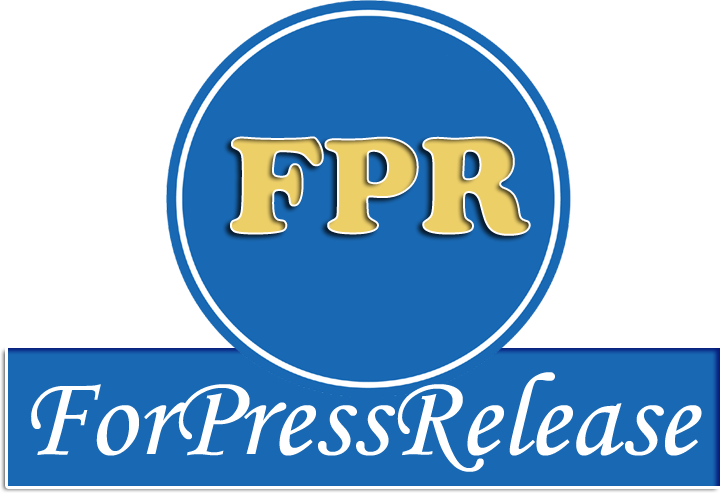Hot Press News
- Future Electronics Named Epson 2024 Partner of the Year at EDS Leadership Summit
- 3F Oil Palm Drives Mega Plantation Initiative in Dima Hasao, Assam under National Mission on Edible Oils
- Ministry of Jal Shakti Celebrates International Day of Yoga with Enthusiasm and Public Participation Across the Country
- KBE Design Build Expands into Full Custom Home Construction in Central Pennsylvania
- DIT University Secures FSSAI's Eat Right Campus Certification with Compass Group India
- A Dust Story by Paul F. Rodney Launches to Inspire Young Readers With a Fantastical Tale of Faith and Imagination
- Harmony Clean Expands to Auckland with New Website Launch
- Gujarat CM and Health Minister Honor Dr. Bharat Agravat with Bharat Medical Excellence Award in Cosmetic and Implant Dentistry
- GRP Estates Unveils Comprehensive Suite of Real Estate Services
- Infoveave Launches Powerful Data Governance Module to Help Enterprises Trust Their Data
- Zone Syrups Introduces Three Game-Changing Flavours
- Galgotias University Among the World’s Leading Universities in QS Rankings 2026
- RPost Launches Cloud Platform to Power Secure, Legally Valid Communications
- BIT Mesra's Scientists Develop Smart Peptides That Respond to Body's pH – A Leap Toward Regenerative Medicine
- RX Japan Opens Exhibitor Registration for JAPAN BUILD Tokyo 2025, Aiming to Surpass 2024 Success
 Mail to a Friend Mail to a Friend |
|
     |
Legal Fallout: What You Need to Know About Similac Lawsuits and NEC Claims
2025-06-21 04:04:35
Legal / Law

1827
Recent legal controversies have disrupted the serene infant formula market, casting Similac, a widely trusted brand, into a contentious spotlight. Parents and caregivers, reliant on the brand for infant nutrition, now face legal challenges as NEC-related lawsuits gain momentum. The surge in legal actions highlights concerns and prompts a closer examination of Similac's potential role in NEC cases.
Seeking answers and justice, it's crucial to untie the web of Similac lawsuits and NEC claims and understand the underlying factors. In this article, we aim to illuminate crucial aspects of the legal battles, providing a comprehensive guide for parents, legal professionals, and the public.
Understanding NEC (Necrotizing Enterocolitis)
Necrotizing Enterocolitis (NEC) is a devastating condition that manifests as inflammation and necrosis in the intestinal tissue, primarily in the colon. Most cases of necrotizing enterocolitis occur in babies born before 32 weeks gestation, posing a significant risk to preterm infants. Full-term babies with health issues, such as heart defects, can also be affected by NEC. Babies typically develop NEC within the first 2-4 weeks of life, emphasizing its early onset and potential severity, as per Kids Health.
NEC progresses swiftly, causing complications like intestinal perforation and systemic infection, endangering neonates' health and well-being significantly. The intricate etiology of NEC involves factors such as prematurity, formula feeding, and an immature immune system. Understanding these complexities is crucial for effective prevention and management of this serious gastrointestinal condition in newborns.
Emergence of Similac Lawsuits
Recently, Similac, a widely used infant formula, faced legal challenges, with an increasing number of families seeking legal recourse. The catalyst for this legal upheaval lies in the alleged connection between its consumption and the development of NEC in infants. Amid NEC's aftermath, Similac lawsuits are a focal point as parents seek accountability for alleged harm to their vulnerable infants.
The first lawsuits emerged in 2022, primarily from parents of premature babies diagnosed with NEC after being fed the popular formula. The Similac lawsuit claimed that Abbott Laboratories, the product's manufacturer, neglected to sufficiently warn consumers about potential risks. Allegations centered on risks, especially for fragile infants.
The surge in these lawsuits signals a growing recognition of the potential risks associated with this once-revered infant formula. The emergence of these lawsuits underscores the intricate intersection between consumer safety, corporate accountability, and the evolving landscape of infant nutrition.
Victims in this lawsuit, as noted by TorHoerman Law, may seek damages for medical expenses, lost income, and pain. Damages, including loss of enjoyment of life and consortium, are case-specific and contingent on individual circumstances. The extent of available damages hinges on the unique details of each case.
Product Liability Claims against Similac
At the heart of the legal storm surrounding the baby formula and its alleged link to NEC lie potent claims of product liability. Wielded by affected families, these claims pierce through corporate responsibility, demanding accountability for potential harm to the vulnerable. The legal actions seek a reckoning for the alleged impact on the most delicate consumers.
Abbott Laboratories, Similac's manufacturer, faces a multifaceted legal challenge. Plaintiffs assert that Abbott failed to adequately warn about potential risks for premature babies and deprived them of crucial information.
Legal actions also target misleading marketing, alleging the product was marketed as a safe alternative to breast milk without highlighting potential risks. Also, some lawsuits explore the world of product defects, suggesting the brand itself may contribute to NEC development.
Forbes reports a rising trend of parents filing product liability lawsuits, holding manufacturers accountable for producing allegedly toxic baby formulas. The surge reflects intensified scrutiny of Similac's safety, with claimants pursuing compensation for medical expenses, emotional distress, and NEC-related damages.
The rising product liability claims depict a legal landscape with potential financial repercussions, highlighting the imperative for robust product safety standards.
Reported Cases and Complications
The legal battle over Similac's link to NEC is driven by both scientific theories and poignant family stories. Families share devastating experiences, shaping the depth of the legal discourse. A definitive causal link remains elusive, but the sheer number of reported cases and severe complications in formula-fed babies is concerning.
NEC is a harsh condition with devastating complications. It can cause intestinal tissue death, leading to perforation and potential sepsis. Severe cases may require bowel resection surgery, resulting in long-term digestive challenges. Short bowel syndrome may ensue, causing malnutrition and reliance on intravenous fluids. Also, NEC can impact a child's development, affecting cognitive abilities and motor skills.
A National Institute of Health study concluded that survivors are at a significant risk of experiencing neurodevelopmental impairment. Due to these reasons, the lawsuit figures are steadily rising. It underscores the growing chorus of families seeking accountability for the pain and suffering.
Regulatory Response and Investigation
As Similac lawsuits intensify and health concerns mount, regulatory bodies, led by the FDA, have launched investigations. These probes aim to assess the product's safety and its potential link to the rising cases of NEC in infants. The regulatory response seeks to determine if there are substantial grounds for concern, prompting corrective actions, warnings, or recalls to ensure public health protection.
The FDA's involvement underscores the gravity of the situation, necessitating a thorough examination of the potential risks associated with its consumption. As investigations unfold, the collaborative efforts between regulatory bodies and legal actions shape the trajectory of the product's future in the market.
Legal Strategies and Class Actions
In the sphere of Similac lawsuits and NEC claims, legal strategies are adapting to meet the challenges faced by affected families. Consolidating individual lawsuits into class actions streamlines legal proceedings and amplifies the collective voice of those seeking justice. Product liability and personal injury attorneys use innovative strategies to build a strong case against the manufacturer, alleging negligence and breach of duty.
As these class actions gain momentum, they create a unified front, pooling resources and evidence to strengthen the overall legal position. Legal strategies in these cases will influence the legal fallout, establishing precedents for future product liability disputes in the infant formula industry.
Seeking Compensation for NEC-Related Damages
Families grappling with the aftermath of NEC associated with Similac are actively seeking compensation through legal avenues. Many have initiated lawsuits against the manufacturer, pursuing recovery for medical expenses, ongoing healthcare needs, and emotional distress. Legal claims broaden, encompassing long-term care, diminished quality of life, and potential future medical complications for affected infants.
These legal actions aim to address the profound impact of NEC on families and hold the manufacturer accountable for the alleged harm caused.
Navigating the Uncharted Waters of Infant Formula Litigation
Similac lawsuits and the NEC claims surge signal uncharted territory in the landscape of infant formula litigation, revealing unprecedented challenges. Interwoven threads of product liability, regulatory scrutiny, and seeking compensation for NEC-related damages create a complex narrative demanding attention.
In this era of legal fallout, the imperative to understand the intricacies of these lawsuits and NEC claims is paramount. The data-driven insights and narratives of affected families provide a foundation for informed decision-making. The evolving legal saga serves as a stark reminder of the critical need for transparency, accountability, and stringent safety measures in infant nutrition.
These legal fallout lessons will undeniably mold the future landscape, establishing precedents for product liability and consumer protection in infant formula.










